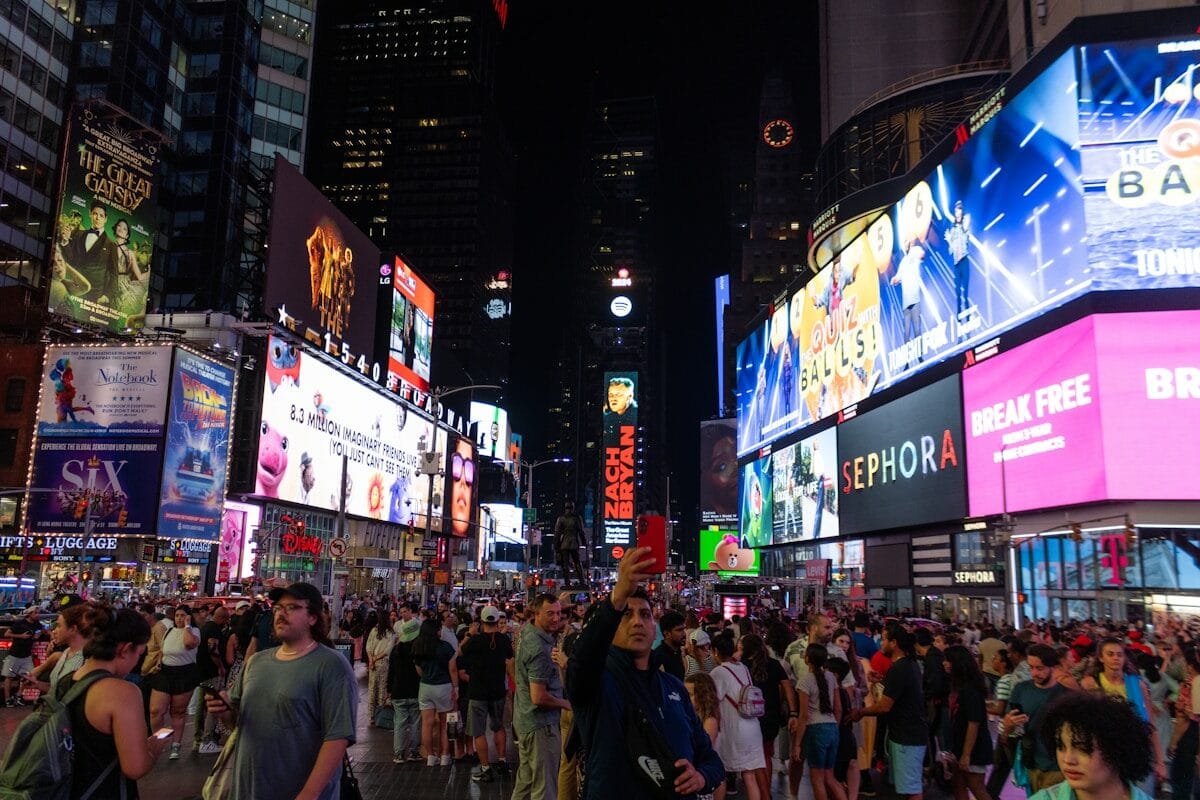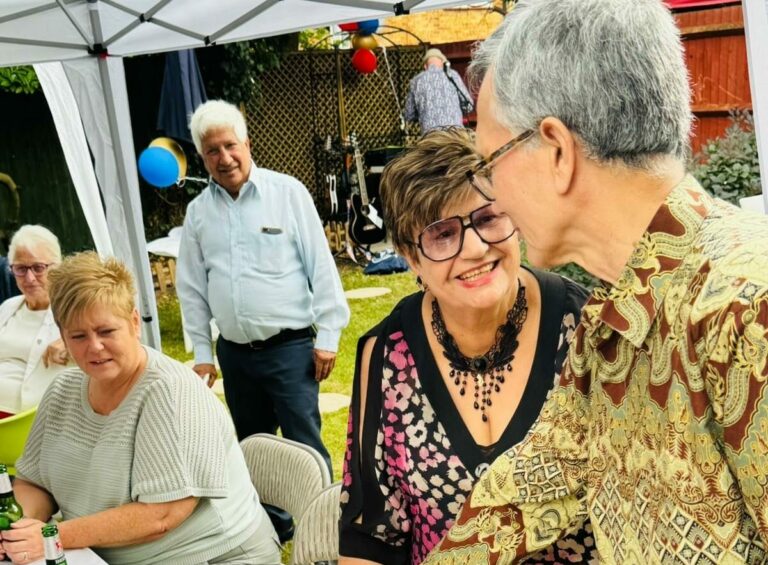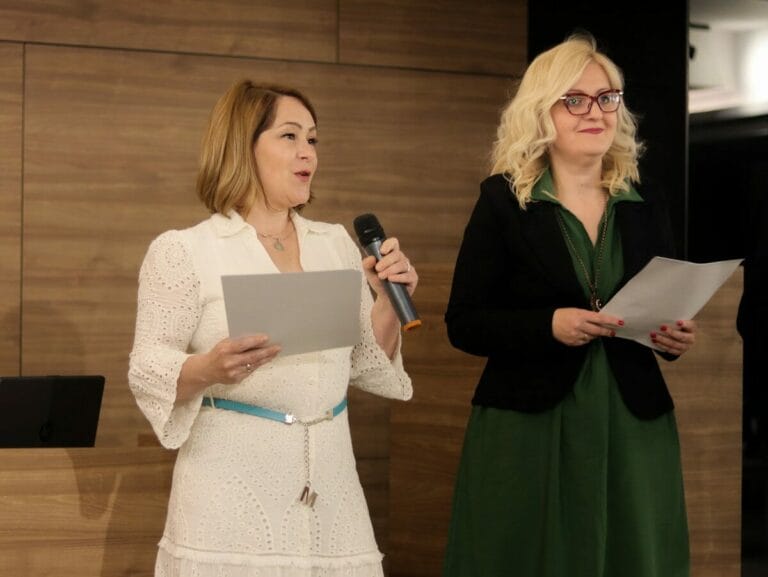Times Square never stops. The flashing neon, endless crowds and towering billboards create a sensory overload that pushes you forward, urging you to move, consume, experience everything at once. But what happens when art asks you to stop and stay for a minute, rather than just glance and hurry past?
That’s exactly what’s happening this week at the crossroads of the world. The Art Innovation Gallery’s ‘Twice Seen’ exhibition is changing the way people encounter digital art in one of the planet’s busiest spaces, inviting viewers to slow down and truly see what’s in front of them.
Two Ways of Seeing
The exhibition unfolds in two distinct chapters, each offering a different relationship with time and attention. Running a curved digital billboard at 1619 Broadway displayed a continuous flow of contemporary digital artworks. The screen’s curvature embraced viewers in what organisers describe as ‘a panoramic rhythm’, turning moving images into spatial presence.
Then there was a once-in-a-lifetime spectacle. Four colossal screens across 5 Times Square ignite in perfect synchrony, fracturing images across multiple surfaces and multiplying the viewer’s experience. Unlike the gentle, continuous flow of the curved installation, this activation is sharp, sudden and unrepeatable.
‘The city becomes both the screen and the stage; the image, both mirror and echo,’ the exhibition states, capturing how these installations examine digital media’s power to turn urban space into a site for collective reflection.
The Art of Slowing Down
For women who value cultural experiences but often struggle to find time for galleries, this kind of public art offers something different. There’s no admission fee, no need to plan ahead or block out hours. The art comes to you as part of your daily rhythm. Research shows that engaging with art can significantly enhance your wellbeing, making these accessible encounters even more valuable.
But that accessibility comes with an invitation – to pause in a place designed for perpetual motion. Times Square’s existing digital art programmes like Midnight Moment have already demonstrated how synchronised billboards can create moments of unity and contemplation amidst urban chaos. Similar experiences, like the annual Mind and Body Day celebration, show how the area can become a space for reflection rather than just consumption.
The average visitor to Times Square stays for 81 minutes, according to recent research on digital billboard engagement. That’s plenty of time to encounter art differently – not as background blur, but as something worth stopping for.
Artists Creating New Visual Languages
The exhibition features over 60 international artists, designers and creative collectives exploring various approaches to digital craft. Among them are artists working with AI-generated imagery like ai_made_me_do_it, experimenting.ai and fantastinen.ai, alongside more traditional digital artists and design studios.
Syrian-Canadian artist Jumanah Alsalmi brings her perspective on cultural identity through digital media, whilst collectives like 9cons.xyz and Optical Arts explore how technology can create new visual languages. Contemporary artists like Kelly Santos have shown how personal perspective can elevate everyday experiences into profound art – a similar approach to what these digital artists bring to public spaces.
What unites these varied approaches is their relationship to scale and public space. These aren’t works created for gallery walls or computer screens – they’re designed to exist in the urban environment, to be encountered by accident as much as intention.
How to Experience ‘Twice Seen’
The curved billboard installation continues through 29 June at 1619 Broadway (near 49th Street), running from midnight to noon daily. If you missed today’s synchronised screen moment, the continuous installation offers its own rewards – the chance to return and see how different works interact with the changing light and energy of Times Square throughout the day.
Art Innovation Gallery specialises in bringing digital art to public spaces through travelling LED installations. Their approach reflects a growing movement towards digital art venues and immersive installations that prioritise accessibility and public engagement.
For those following online, the gallery maintains active social media channels where early visitor posts and artist spotlights provide glimpses of works in their urban context. The exhibition hashtag #twiceseen offers real-time documentation of how people are encountering and responding to the pieces.
When Cities Give Us Something Unexpected
There’s something powerful about encountering art when you’re not looking for it, especially in a place that trains you to move quickly and consume constantly. These moments of unexpected pause can stick with you long after you’ve returned to your routines. As recent exhibitions exploring identity and human form have shown, art that meets you where you are can be particularly impactful.
The ‘Twice Seen’ concept suggests that seeing something once isn’t enough – that repetition and return can deepen understanding. In a city that’s always changing, always moving, the exhibition creates space for a different kind of looking. Not the quick scan of commercial messaging, but the slower consideration that art requires and rewards. This aligns with broader conversations about making art and culture accessible to everyone, not just those who can afford gallery tickets.
As Times Square’s existing digital art programmes have shown, these installations can offer moments of unity and tranquility in the bustling environment. They remind us that even in the most commercial, fast-paced spaces, there’s room for reflection and wonder.
Perhaps that’s the real power of placing art in Times Square – not just the scale or the spectacle, but the permission it gives us to stop, to see, to experience something beyond the usual rush. In a place designed for quick consumption, ‘Twice Seen’ asks us to consider what we might discover if we looked again, more slowly, with greater attention.






